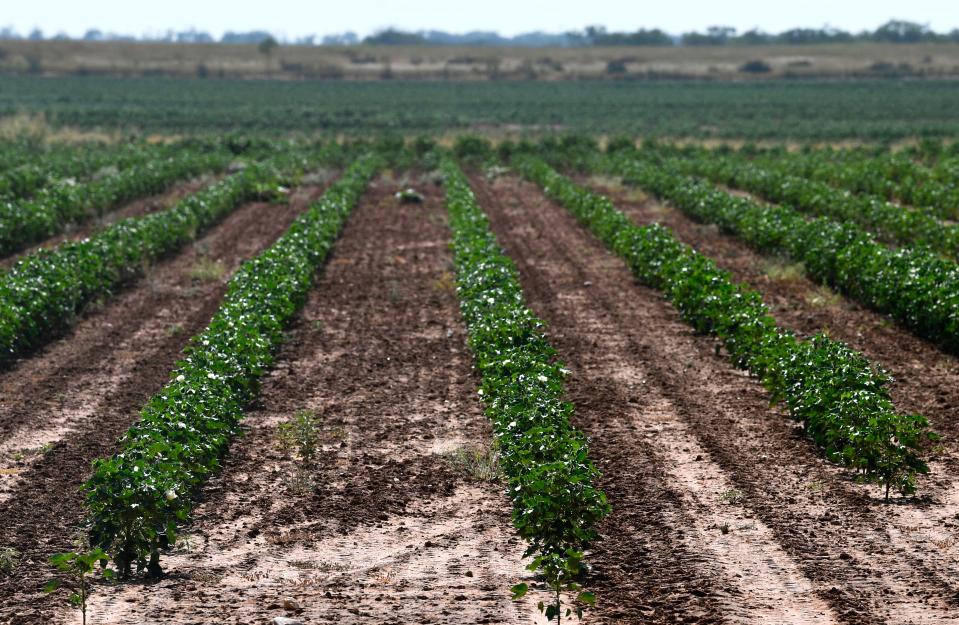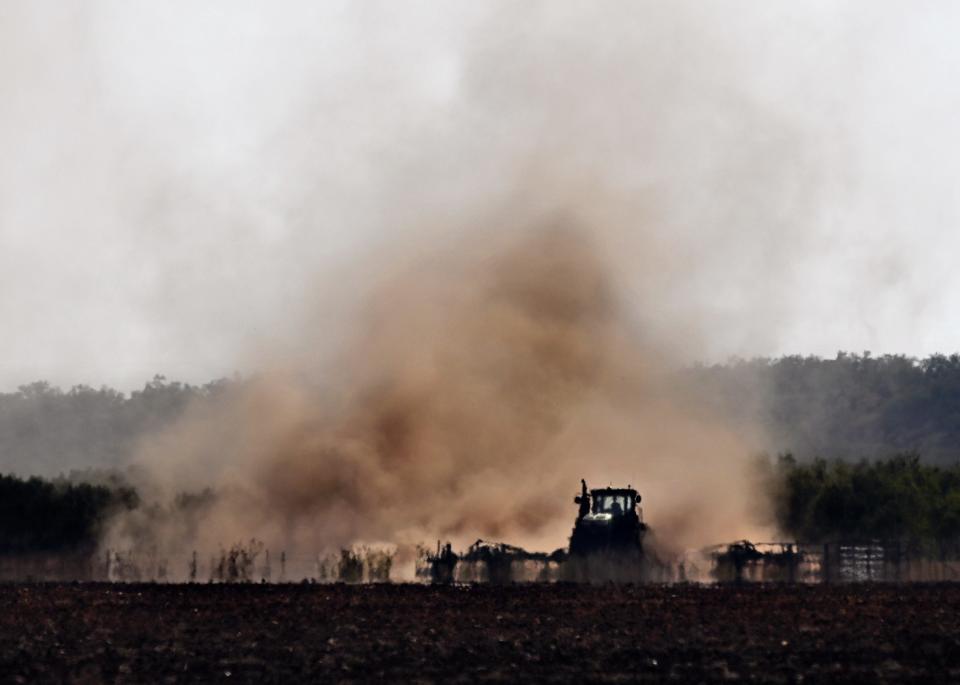Cotton in the Big Country: weather challenges, insurance draw outs and harvest numbers
Agribusinesses contribute $1 billion to the Big Country economy annually, according to a 2022 infographic from the Abilene Chamber of Commerce and Texas A&M AgriLife Extension.
Cotton is considered the No. 1 commodity within the region with production resulting in an estimated value of $229 million.
In the Abilene-area, cotton production supplies over 4,000 jobs and continues to be a large stake in the wellbeing of the community.
However, for the past two years, cotton producers have taken a hit to crop growth and production numbers across several Abilene-area counties.
“Cotton is the top crop within the area, especially in Jones, Fischer and Haskell County,” Steve Estes, Taylor County extension agent, said. “Overall, production is down this year, and it wasn't a good year last year as well. We're really going to hit two years in a row with bad production.”
Though many understand the effects of drought on agricultural production, farmers faced other unique challenges, Estes said.

Challenges for cotton production
During the growing season, farmers fought against the weather to germinate seeds and keep them planted in the ground.
“What was happening this year was farmers had to handle rainfall during a period of drought. We were getting rain followed by a windstorm or things of that nature, and the moisture levels were affected by the back-and-forth conditions," Estes said.
"There was moisture to get the cotton up and germinated, but when growth started to happen, we would get a windstorm, and the plants would get sandblasted or uprooted, killing it in spots across acres,” Estes said.
He said many farmers were replanting up to three or four times in efforts to produce during the 2023 growing season.
“They were in a hurry to get all their acres planted by late June for insurance purposes and to have the plants reach full maturity by fall, so they were up against a timeline,” Estes said.
Some farmers gave up on cotton and resorted to planting secondary crops like sorghum and sesame plants. Others who made the cutoff date for planting had to face the hot and dry summer days.

Estes estimated 80% to 85% of cotton planted in 2023 did not reach harvest this year, and majority of producers drew on crop insurance to cover expenditures and lost revenue.
As of Dec. 21, the trade value for cotton was 78 cents per pound. Local farmers ideally want to make one bale per acre. That amounts to an estimated 500-pound harvest per acre that would currently earn $390.
Based on recent measures, farmers are only harvesting 300 pounds per acre which pays $234 an acre. With input costs at around $200 per acre, farmers are barely breaking even this season, Estes said.
From the field to the gin
Across the nation producers have been affected by the events of COVID-19, extreme weather changes and natural disasters for the past several years. In an attempt o keep farmers above the red line, the U.S. government has authorized crop insurance and loans for growers.
“Usually, farmers have crop insurance to help them through the bad years, but one big economic impact that we are seeing in the cotton industry is with our local cotton gins," Estes said.
"They don’t have a safety net and depend on farmers to produce, and if there's no cotton or very little, the cotton gins are not really making any money forcing closures,” he said.
Texas is the top cotton-producing state in the nation bringing in $2.6 billion to the state’s economy. Looking at the bigger picture, a decrease in production numbers affects every segment within the cotton industry supply chain.
The insurance dilemma, looking forward to 2024
At the beginning of the season, many producers were optimistic because of rainfall levels at the start of the planting season, but ultimately a dry summer resulted in another tough year for production.
“It’s been fairly tough for farmers the last couple of years, and although crop insurance appears like a silver lining, insurance is dependent on yields from previous years,” Estes said.
He explained it in terms of grades in school. If a person has 10 grades in the gradebook, but one assignment is a zero, the overall grade average goes down, thus making it more difficult for producers to drawback on support.
The majority of cotton farmers within the Big Country solely depend on their income coming from the farm.
“They've been able to get by for a couple of bad years, but they can't afford for more bad years to come. They've got to have some good years to build their yield average back up,” Estes said.
As 2023 ends, producers are hopeful the weather cycle of El Nino will help production numbers in the upcoming year.
“We are due a good year, and as we move into an El Nino year and wet season for 2024, we are anticipating 2024 to be a little better,” Estes said.
More: Survivor creates My Tiny Warrior fundraiser to donate books to children facing cancer
More: Announcement of online nonprofit database presents opportunities for organizational growth
This article originally appeared on Abilene Reporter-News: 'Another bad year' for cotton production in the Big Country

